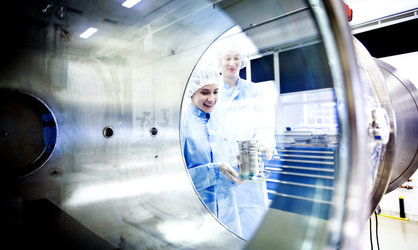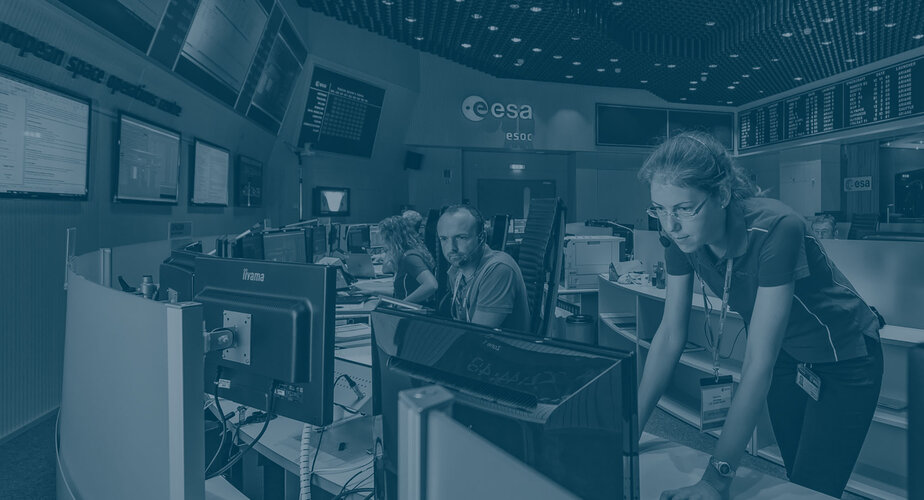Life as an ESA YGT: Mission Operations Concept Engineer
With the launch of the 2021 Young Graduate Trainee recruitment campaign, we’ve been talking to some of our current YGTs about the work they do, to give you a flavour of life at ESA and an idea of the range of opportunities currently on offer. This week, we chatted to 24-year-old Tom Mladenov from Belgium. Tom’s educational background includes a joint master’s degree in Electronics and ICT Engineering. He has been working as a YGT at ESA’s mission control centre, ESOC, in Darmstadt in Germany, since summer 2019.
Hi Tom, let’s start with your job – tell us what you do at ESA
My YGT is as a Mission Operations Concept Engineer in the Flight Control Team for ESA’s first 3U CubeSat, which provides an open hardware/software innovation platform in low-Earth orbit. This involves coordinating with companies developing software to run on the satellite and, in the run up to launch in 2019, I prepared the ground and space segment, including the mission control and automation system and data connections to the UHF ground stations and antennas used during the launch and the early orbit phase of the mission.

We have daily operations meetings where we review the status of the spacecraft and the activities that took place, as well as a meeting with industry partners (who built the satellite) to check on the status of any problems we are still solving. Based on the outcome of these meeting, I usually find myself writing and testing procedures to run in-orbit, writing code for our automated procedures or testing out new experiments. Most of the work during the day is all in preparation for the evening where we establish contact with the satellite and uplink new software and perform the tests. Afterwards, we review the data in the morning, and the cycle starts again!
What’s the best part for you?
In general, being part of a team controlling a satellite is a unique experience. We work on complex problems combined with limited visibility and our job is to find ways to resolve them in a limited time window. It is very challenging and rewarding!

The most satisfying part of my job is writing automated procedures and seeing them work in real-time with the satellite. During commissioning I was responsible for the Linux processor on board and developed the experiments to check out and test the various systems and even downloaded the first orbital pictures from the satellite!
Any highlights so far?
Definitely the launch of the satellite OPS-SAT in December 2019! The most tense moment was the first pass with the satellite, where we try to contact the spacecraft and check the thermal and power status. In the first pass we saw no signal which was initially very worrying. Several orbits later we were finally able to ‘ping’ the satellite and have the first two-way communication. I remember operating the console and as soon as I reported on the voice loop that we’d received a response from the satellite, everyone in the control room gathered around to see it.
What did you know about ESA and the YGT programme before applying?
Throughout university I was involved in several space-related activities and took part in the ESA Academy REXUS/BEXUS programme where I was part of a team developing a new type of quantum magnetometer, which ultimately flew on a stratospheric balloon in Kiruna, Sweden.
During the project reviews at ESTEC, I met with people who explained the YGT programme and the great projects they were working on within ESA. This really sparked my interest and I already marked my calendar for when positions would next be opened.
From all the opportunities published, how did you choose the one you applied for?
I learned about the exciting world of mission operations through an ESA Academy course I followed at ESEC in Redu, Belgium. The YGT opportunity caught my eye as it covered every part of the lifecycle of a mission; testing, procedure preparation, launch, LEOP and nominal operations. I realised that the YGT position was the ideal opportunity to put the theory I had learnt at the course in Redu into practice in a real life space mission at ESA. Funnily enough, the course tutor is now my manager at ESA!
Can you offer one piece of advice to anyone who would like to apply?
Even if you are still studying, it’s never too early to broaden your horizons; participate in conferences and try to expand your network. This is what definitely helped me on my path to ESA.
Apply now for the 2021 YGT opportunities!

The 2021 ESA YGT opportunities are now open for applications until 1 March. Positions are available in engineering, science, IT and business services. Find out more and apply now here.
More information about the YGT Programme (including employment conditions, eligibility criteria & selection process)












